THE FURIOUS
THE FURIOUS (1) > #1 THE ESCAPE #2 THE ISLE #3 THE MAN #4 THE PALACE
Biennial Project About The Ludovico Ariosto’s FURIOUS ORLANDO
Rasori Pavilion | Major Hospital of Parma
19, 20, 21 november | h 9:00 p.m.
26, 27, 28 november | 9:00 p.m.
After having directed its attention to Alessandro Manzoni, Lenz continues on researching in the archetypes of Italian language, going back to Ludovico Ariosto’s Orlando Furious, which is one of the greatest epic poems of the Renaissance period. The bravery and the lunacy are spread across the whole poem like a rhizome; Orlando’s excessive, paradoxical exaggerated frenzy not only explodes within him who however is a perfect, invincible, innocent sane knight of sound principles but also represents the poem’s poetical-linguistic and aesthetic own structure. This is misplaced like the reason inside “the bottle which contained his wits, founded on the Moon by Astolfo and returned to Orlando’s body” as Calvino wrote in the introduction of his Furious. The nervous system of Orlando Furioso consists not only in the loss of one’s own, but also in the disappearance of the things, the reality, the corresponding stories, the plot, the magic, the desire and of the spatial explosion of the narrative contexts: the most blind and sudden brutality which designs poetical frameworks that were original in respect to the chivalric literature stereotypes. After the realisation of the first two chapters of The Furious, which were installed in the amazing spaces of the Guatelli Museum, Lenz Foundation will present the new chapters #3 The Man and #4 The Palace and – together with a new bet-site of the chapters #1 The Escape and #2 The Isle – within the twentieth edition of Natura dei Teatri festival from the 19 to the 28 November.
The majestic imagoturgy, written in 8–lines octaves, outlines an epochal landscape, moves towards a different, more overlapping and complicated world. A century later Cervantes, writing his furious Don Quixote, will contribute with the decline of this literary period but, resuming Calvino’s quote “when the parish priest and the barber set fire to the library which made the gentleman of La Mancha go insane, the Orlando Furioso appears between the few books that are saved..”. The structure of the performance consists in eight performing and visual episodes which will be installed and directed by Maria Federica Maestri and Francesco Pititto – four in 2015 and four in 2016 – and finally interpreted by the sensitive actors. They are ex long-term psychic care patients and people with intellectual disability who completed an artistic path, considered unique in Europe for its intensity and expressive outcomes, in order to find an irrational and “violent” vision of contemporary theatre. After the realisation of the first two chapters of The Furious, which were installed in the amazing spaces of the Guatelli Museum, Lenz Foundation will present the new chapters #3 and #4 respectively entitled The Man and The Palace – together with a new mise-en-scene of the chapters #1 The Escape and #2 The Isle – within the twentieth edition of Natura dei Teatri festival from the 19 to the 28 November.
During this second phase the installative dynamics are subtractive: the absence of a monumental space “coherent” with the unreal of the artwork, a palace characterized by a peculiar architectonic structure, will cause a further reflection about identity and the scenic role of the palace in the drama of The Furious: if the Palace of Atlas, maybe the most representative picture of Ariosto’s epic poem- is a maze where the knights remain trapped in a chase of vain and fleeting images due to a whirlwind mechanism of mirrors, then the hospital will be the place where the contemporary man feels like a prisoner of spells and afflictions more than the others. The picture of the antique twentieth-century pavilions, which are located in the historic area of Parma General Hospital, seems harsh and compelling but its scenic physics are suitable for this new journey inside Ariosto’s man. The creative process is able to repossess the treatment zone, converting it in a centre of artistic production by an exciting action of political subversion, and also overturn the individual destinies, as it has happened to the sensitive actors who have been working with Lenz for years thanks to the collaboration with the DAIMS-DP of Parma.
THE FURIOUS #1 #2 #3 #4
From the Orlando Furioso written by Ludovico Ariosto
Creation | Maria Federica Masters | Francesco Pititto
Drama | imagoturgy | film scenes | Francesco Pititto
Installation| plastic elements | direction | Maria Federica Masters
Music direction | Andrew Azzali
Performers |Paolo Maccini, Carlotta Spaggiari, Frank Berzieri, Valentina Barbarini, Charles Right, Vincent Salemi, Delfina Riviera, Barbara Voghera, Marco Cavellini
Curated by | Elena Sorbi
Technical direction | Alice Scartapacchio | Lucia Manghi | Marco Cavellini
Assistant | Valeria Borelli
Organization | Ilaria Stocchi
Comunication | Violetta Fulchiati
Press office | Michele Pascarella
Production | Lenz Fountation
In collaboration with the Department of Integrated Mental Healthcare – AUSL Parma
FURIOUS ensemble trailer from lenz refractions on Vimeo.
Trailer THE FURIOUS from lenz refractions on Vimeo.
THE FURIOUS #1 THE ESCAPE
Angelica, taking advantage of the turmoil in Charlemagne's camp where she is being held in custody, run away into the woods. Angelica's escape is the founding nucleus on which the entire complex structure of the Furioso is built: on the one hand it represents the start of the movement, a point that moves in space and that starts from a distant elsewhere (placed outside the poem – it is no coincidence that Angelica is an invention of Boiardo), on the other it is the emblem of the condition of incompleteness that surrounds the knights, of the exhausting search for satisfaction, of vain desire. The meeting with the knights in canto I, and therefore also the unveiling of their size and the role they play in the poem, it always happens through this progressive estrangement.
THE FURIOUS #2 THE ISLAND
Ruggiero arrives with the hippogriff – a winged horse – on an enchanted island, populated by talking plants and rocks. Ruggiero talks to a myrtle which is actually Astolfo, which was transformed into a plant by Alcina. The island is inhabited by three fairies: Alcina and Morgana representing vice and Logistilla representing virtue. Ruggiero wants to go to the kingdom of Logistilla but Alcina tries to seduce him: all of Alcina's lovers are then transformed into plants or stones (like Astolfo). While Ruggiero waits for Alcina to spend a night with her, Melissa arrives – a good sorceress – with a magic ring that breaks Alcina's spell and makes her appear in her true form: ugly and old. Ruggiero runs away to Logistilla who lives in a virtuous world.
THE FURIOUS #3 THE MAN
Doralice is going to the place where she is to marry Rodomonte. Travel through the woods, with his guards and at a certain point Mandricardo approaches, who knows that Doralice is a very beautiful woman. Mandricardo asks the guards to see her, but they won't let him, so he kills them all, see the woman, he falls in love with her and takes her with him on his horse, and then convinces her that he is the right man for her.
THE FURIOUS #4 THE PALACE
The palace of Atlas is perhaps the most representative image of the poem; a labyrinth where knights get trapped, in a swirling mechanism of mirrors and the pursuit of vain and elusive images. The whole of canto XII is built through a dense network of intertextual references: both in the parallel between Orlando and Ruggiero, both engaged in a vain love investigation, both in the references to the first canto of the poem. Ruggiero arrives in the castle after losing Angelica, in pursuit of the vain image of Bradamante; Orlando believing to see Angelica carried away by an unknown knight. Just the woman loved by the paladin to make vain for a moment even the spell of Atlas in his real appearance, freeing Orlando himself from the mechanism, Sacripante and Ferraù (as can be seen the re-proposition of the same scheme of the opening of the narration). The other knights (including Roger) they will remain imprisoned until Astolfo's subsequent release, once again thanks to the help of magic and the book that undoes all spells donated by Logistilla to the Duke of England.
– ‘Orlando Furioso on the run in the tool museum’
by Giuseppe Distefano, The sun 24 Ore, 26 June 2015
The challenges, always new, they are the daily bread of Maria Federica Maestri and Francesco Pititto, or Lenz Refractions, historic company from Parma that has recently become a Foundation. The person is always at the center of their work, including so-called “sensitive actors”, patients with mental and intellectual disabilities with whom the couple, together with the other historical components, has been working for years. The ongoing challenge – while others loom, such as “Macbeth” for the Verdi Festival 2016 – sees them try their hand at a two-year project structured in eight scenic episodes around Ariosto's poem "Orlando Furioso" designed for non-theatrical artistic and monumental places. The first two episodes of “Il Furioso – La Fuga” and “L’Isola”, have found a significant interlocutory space within the immense collection of objects and tools of the Ettore Guatelli Ethnographic Museum, become an ideal container of verses in freedom and in dialogue - a basic textual structure on which the verses of sensitive interpreters are grafted – entrusted to these individuals with an experience of "expropriated". As I am, in the museum, the sixty thousand tools gathered and hoarded, seemingly worthless and useless. “The form of the impossible staging of the poem – explains Maestri – is a collection of subjects on the run, by themselves and by their regulatory function, the “showing off” of the irreparable and unrepaired subject as Guatelli demanded from his beloved 'tools' – but placed, placed with love and stubbornness on the poetic wall”. You enter the open-air courtyard of the Museum where three large screens project filmic scenes of Angelica tra i campi, fleeing from the man who mocks her and runs after her. The apparition behind and in front of the screen bring back paladins with a denied identity, who wear a boxer's helmet with a tail of different colored feathers as a helmet. The first to show up, in its slow and detached gait, it's Orlando, specifying that he is the Furious, who declares his love for Angelica, which she instead denied. Armed therefore with sword, armor, lance and imaginary dagger, gets ready for his horse which, in summoning it, it seems there. Later itinerant, among running knights and other projections of wooden nags, one of the upper rooms is accessed in semi-darkness by some stairs where we feel overwhelmed by the wonder of the walls covered beyond belief with objects of all kinds expertly arranged. Here Angelica, pursued by her love objects, Orlando, Rinaldo, Ruggiero, Ferraù, Sacripant, both Christians and Saracens, transfigured in the obsessive seriality of hammers, pitchforks, nails, hooks, scissors, sickles, knives, is in constant flight from the object of unwanted pleasure, and in search of the only desired sentimental body: the weak and wounded one of the young African Medoro; e, poignant, Bradamante's voice, the brave warrior, chasing the fugitive Ruggero with whom she is in love, the Saracen riding his fantastic Hippogriff. A running around, back and forth, while listing the meaning of his escape: from the storm and the wind, by the brutes, from sadness, from oppression, from starvation, from the darkness. Words that find a strong identification with the interpreter who pronounces them. Go back outside, here is the elderly Alcina in Asian dress transparently on the screen, the evil sorceress who transforms men who fall in love with her into plants and animals. "I am old, but beautiful", reiterates, “I was born again and I know how to dance”, obsessed with the desire for eternal youth. And in the meantime she repeats the enchanting gesture of taking the weights that are brought to her by passing them from one hand to the other, while his words, they ring with thrilling truth.
-'Orlando Furioso between 60 thousand objects of peasant art'
by Tommaso Chimenti, Daily fact, 16 July 2015
– 'The Furioso of Lenz. Ludovico Ariosto for sensitive actors'
by Matteo Brighenti, Double zero, 2 July 2015
The love that is not satisfied is a time that always runs the same. What was, will still be, in every direction you can see. “Here” is a continuous motion ne The Furious of Lenz Foundation. Transported by its making, the desire to say and give oneself overflows beyond the banks of Ludovico Ariosto and the Guatelli Museum in Ozzano Taro di Collecchio, province of Parma. As if the whole earth were an embankment, every clod and tool that cultivated it were the expression of an unfulfilled possibility: build, realize, to fulfill one's life by means of the loved object. Contain everything of the other and leave everything of oneself free. Running while standing still. Because of this, Lenz's new dramaturgical research dedicated tofurious orlando, in its first two episodes (staged for the last time at the Guatelli last Saturday), The escape e The Island, can be considered a phantasmagoria, an allegory of ghosts inhabited by sensitive actors - with psychic and intellectual disabilities - and by the historical actors of the Company, surrendered semblances of wars that can no longer be won, just lose with more spirit, be it happy or angry. The overall project, eight shows between 2015 and the 2016 for non-theatrical spaces, is the umpteenth performative outcome of the multi-year collaboration with the Integrated Welfare Department of Mental Health and Pathological Addiction of the Parma Local Health Authority. After the closure of judicial psychiatric hospitals, increasingly a wealth to be preserved for recovery and social reintegration.
The Guatelli Museum
The Furious it therefore started from the ethnographic museum in the Parma area which presents a collection of tools from peasant culture, but also boxes, toys and shoes: sixty thousand articles, ghosts also without a shadow at the wall of their uselessness, irreparable and unrepaired, as Ettore Guatelli demanded, the "Mother Teresa of things", because he only collected poor objects, Enrico says, the volunteer who guides us in the house museum afterwards The escape e The Island. Everywhere he looked, looking for spaces to fill. His real reason for living. When he returned from an 'expedition', the car was so loaded that the muffler dragged on the gravel of the entrance. A fury of hoarding, lucida, because he was the first to joke about it anyway. He died on 21 September 2000 at the age of 79 years. “The external and internal spaces of the Guatelli Museum give material voice to the obsession of the collector – says Maria Federica Maestri, who takes care of installation, plastic elements and direction de The Furious – the infinitely repeated act (interrupted only by the death of collector) of collecting a set of 'minor' objects apparently without value and use, because expropriated from the primary function of tool, it is similar to our drama device. The form of the impossible staging of the poem is a collection of subjects in flight, by themselves and by their regulatory function, it is the 'display' of the subject placed with love and obstinacy on the poetic wall of the theatre”.
The path of Lenz
Maria Federica Maestri with Francesco Pititto, Responsible for The Furious of dramaturgy, imagery and film scenes, he founded in 1985, a Parma, the then Lenz Rifrazioni. An extreme and radical fidelity to the word and to the text, gutted, translated and adapted for the scene, a long laboratory work with the actors, an original stage installation and film creation activity, they immediately defined its poetics: great classical works, considered unrepresentable for their linguistic or dramaturgical experimental nature, have been transcribed into contemporary visions. In a more recent phase, the focus is on visual and plastic investigation: the theatrical action is wedged between writing for images and the creation of space, which is meant to be a standalone installation, with the 'artistic reagents' interpreters of the creative text. Dal 1996 have opened an active dialogue with the international scene through the Natura Dèi Teatri festival dedicated to new research, of which they are the curators. Lenz Fondazione was born in November last year from the union of Lenz Rifrazioni and Natura Dèi Teatri. The artistic direction is handled by Maria Federica Maestri and Francesco Pititto, who is its president. Rocco Caccavari is the honorary president and scientific director, former president of Natura Dèi Teatri. The venue is Lenz Theater, an industrial space from the 1940s, Completely refurbished, in the historic suburb of Parma.
#1 The escape
Far from the centre, you have edges, the sincere and natural truth of the transience of things makes a fine show of itself. When we arrive at the Guatelli Museum the birds are singing goodbye to the day, the cut grass smells fresh and the noise of the cars on via Nazionale is a dull rumble, muffled by distance. The house museum and the whole complex are low, close to the land to be farmed, the bowed head of work, the commitment and effort of waiting for the sun to come to cheer him up. Behind the hills, the sunset falls into an increasingly rusty red, time ruins, consume, attacks, it is a door that leads to another door, and then to another and another. Angelica runs, he crosses the thresholds of his escape on three large screens hanging from the vaults of the portico of what used to be the stable of the Guatelli house. You see it and you don't, running seems like the light of a dream. It's Carlotta Spaggiari, Lenz autistic actress, already Ermengarda in the recent staging of theAdelchi Manzonian, the protagonist of the cousin episode of The Furious, The escape. He has a boxing helmet, a colored boa as a long tail, a golden bag. All actors, arriving like waves behind the screens, they have this Raging Bull outfit who have lost their way to the ring, who no longer have ropes to hold on to: the battle of life has left them alone with angles in their heads. They speak of an Emilian who has not separated the wheat from the chaff, concrete, popular, the text is not only by Ariosto, but also of their undeniable present nature. Maria Federica Maestri gives them the poignant and restless pace of the dust that settles on things, the grains and the fall. Angelica runs away from those who want her out of desire, from Orlando, that as a wise man he became mad and the soul flew to Hell or who knows. The images of Francesco Pititto refer to a race whose wheezing cannot be heard, floating like a footprint in the sand, the wind is a soft surprise in the mane of this runaway woman. There is everything that we cannot see with our eyes, memories, the aspirations, decisions made and retracted. The action around the reader / spectator of the multitude of characters in continuous movement of escape, Chase, lotta, loss of reason, magic - suggests Pititto - is from the point of view of vision/fruition very similar to a hallucination. The paratactic scanning of the scenes builds a picture in progressive formation; there seems to be no end, there is no end of history made of many stories. A jousting of knights, amazons and horses running wildly. The escape it is escape, it is tautology, it is obsessive repetition between man and woman, because for Angelica who flees and Orlando who pursues there are Bradamante who pursues and Ruggero who flees. The atmosphere is full of unknown expectation, like the air before the rain, a charge concentrated on us (the sound design is by Andrea Azzali and is inspired by Wagner's Tetralogy). We follow the trail of the foliage in the square and then in the museum. Inside, the amorous subjects are transfigured in the series of hammers, pliers, nails, scissors, sickles and knives collected by Ettore Guatelli. Angelica, now doubled in the run by a second actress, the one hour hand, the other of the minutes, looks at them, He names them and they remain immobile in their intention to receive attention. The room is so full of tools that you can no longer open the windows. The oppression of the pursuit of absolute possession, total, it becomes dark heat that scrapes the throat. We find shelter by retracing our steps, to breathe where we already knew how to do it and the mouth can open as much as the eyes, in the square, outdoors.
#2 The Island
Return to stillness too The Furious. In the second episode, The Island, sits on Alcina's throne, Delfina Riviera, already Ophelia inHamlet and Nun of Monza ne The Betrothed, evil fairy in a brothel red kimono, witch similar to the sorceress Circe, that transforms men who fall in love with her into plants and animals. The furious search for love becomes more spoken and less agitated, thrust weakens, finding comfort in the concentric propositions of a body that feigns its beauty beyond the limits of the years. The profound levity of puppet theatre, the flamboyant color of the game played seriously, it weighs down with blurs, persistent illusions: travel, built ne The escape by stages of painful freedom, are The Island seems to turn against, to fall under the feet of pursuers and pursued. They were looking for yet another door, they found themselves in a network. Like the Museum for Ettore Guatelli, the world passed through that house ended up being its only possible world. We close the circle of the story with the three large screens of the beginning. Alcina is lying in front of us and, in video, she is filmed on the bed in Guatelli's private room, filled with dozens of clocks. The dials are silent. In the 'forest of things', in addition to rust and dust, now it has also stopped The Furious sensitive and labyrinthine by Lenz Foundation. The endless opportunities to love, in the end, they all finish. But loving the unattainable already reaches the icy enchantment of eternal rest in life.
– 'Serial visions. Entrelacement and imagoturgy in the Lenz Foundation's Orlando Furioso
by Laura Gemini, creative uncertainty. Performance, average and spectacular forms, 30 June 2015
Just as a reflection on the relationship between serial media devices is taking shape (mainly related to the languages developed by the literature, from the radio, from television and the web) and the theatrical device (with its ways of taking into account from the very beginning a certain relationship with the articulation of time and space) – which will be discussed during the MediaChange conference in Urbino (8 e 9 July) – it happens that Lenz Fondazione has presented in recent weeks (dal 18 al 20 June and from 25 al 27 June 2015) a two-year serial project starting from Orlando Furioso by Ludovico Ariosto. The project is structured in eight scenic episodes that address the Orlando themes from time to time in a writing of the text that starts from 38000 verses of the poem to then mix them according to a rhizomatic structure, to use the words of Maria Federica Maestri (who takes care of the direction and the installation), with other traces of text that emerged from the work with the "sensitive actors" of the Company. Performers with cognitive and mental disabilities who have been working together with the other actors and directors of Lenz for many years thanks to the consolidated collaboration with the Integrated Welfare Department of Mental Health Pathological Addictions of the Parma Local Health Authority. From what Lenz Fondazione defines a narrative and visual entrelacement derives a stratified and complex dramaturgical work in line with that type of research that the theater born between the eighties and nineties, if we want to use the generational observation lens with all the prudence of the case, carry on rigorously. A type of dramaturgical investigation that has managed to give substance to the imaginary. A performative imaginary therefore in which the experience of images passes through the experience of bodies and their authenticity and which in this case is developed within a real "monumental imagoturgy of octaves" curated by Francesco Pititto. Term indicating the scheme of visual composition that proceeds parallel to the dramaturgy to bring the characters into focus, the details of bodies and things that together outline the imaginative and psychedelic scenario of the work. A composition which also includes a sound design by Andrea Azzali inspired by some motifs from Wagner's tetralogy, also based on recomposed thematic fragments as if to define a sound mosaic. In accordance with its complex dramaturgical structure, the project foresees an installation form for non-theatrical spaces, that is to say that the individual episodes of the series are created in a site specific relationship with the spaces that host them. The first two - #1 The escape e #2 The Island – lived in the incredible Guatelli Museum in this version, ethnographic museum in the province of Parma which houses the collection of Ettore Guatelli di 60.000 objects - tools of peasant culture, cans, toys, shoes, tin signs, glasses and bottles, watches… – serially accumulated, ordered and composed in a decorative key, effectively making that place an art installation in itself, a sensitive environment crossed during the shows by actors and spectators, both inside and outside the museum. The first episode has Angelica and her escape as the protagonist, which at the beginning we see on video in the three screen-drapes that close the portico of the peasant house where the museum is located. Angelica runs away from her love objects, first of all Orlando but also Rinaldo, Ruggiero, Sacripante “transfigured in the obsessive seriality of hammers, pliers, nails, scissors, sickles, knives” of a room of the house reached by a staircase that we climb among a myriad of other things. The objects in this room-scene are the metaphor of the erotic tool that Angelica doesn't want because what she wants is Medoro's body while, at the same time, Bradamante (Rinaldo's sister) “pursues the fugitive Ruggiero, the Saracen knight riding his fantastic Hippogriff” (from room materials). The second episode focuses on the character of Alcina (Delfina Riviera), the evil fairy of the poem who transforms men into plants and animals (Astolfo, the riders) who fall in love with her attracted by her beauty but behind which her old and worn body can hide because "on her island, placed beyond the Pillars of Hercules, imaginary place beyond the extreme limit of the known world, there is no room for the truth of time". And it is here that the imagoturgy makes use of the sequence of video images – as background and metaphor of an infinite and cosmic time but of the desire for eternal youth – of the serial and haunting series of clocks lined up and arranged on the shelves of one of the private rooms of the Guatelli. Nell’interlacing of visionary fiction, that of Furious, and the real but equally visionary environment of the museum act the sensitive actors (Frank Berzieri, Marco Cavellini, Charles Right, Paolo Maccini, Delfina Riviera, Federica Rosati, Vincent Salemi, Carlotta Spaggiari, Barbara Voghera) together with one of the historical actresses of Lenz (Valentina Barbarini) with their freshness and irony, truly realizing the kind of renewal of contemporary theatrical language based on a new articulation of the doubling of reality. In fact, it is not a question here of playing on the unveiling of theatrical fiction, and therefore on its particular status of reality, but to shift the level of representation to being, on being thus and not otherwise of “those” actors who, as Maestri and Pititto tell us after the first two episodes, while reciting the Furious occasionally they indulge in other crossings, to the other works they have worked on… a small sign of being inside one's own world – internal and authentic – and of proposing it with “all its reality” to those who look at them and would continue to look at them for a while longer. Thanks to Michele Pascarella, Lenz Foundation press office, and not only.
– 'Fleeing from objects: on Il Furioso by Lenz'
Laura Bevione, Amandaviewontheatre, 7 July 2015
An isolated farmhouse in the gentle plain a few kilometers from Parma: a place transformed into an ethnographic museum by its last inhabitant, Hector Guatelli, That, between horror vacui and anthropological desire to collect endless testimonies of work and peasant habits, starting from the Second World War he built a heterogeneous and immense collection that now fills every single centimeter of every room of the ancestral home. Objects of any kind – keys, scissors, corkscrew, ecc. – tin and wooden boxes, musical instruments, bottle caps and cans: all arranged neatly and, in some cases, artistically, as if to create unusual decorative elements. A quantity and variety that take your breath away and generate a slight sense of vertigo: effects that Maria Federica Maestri and Francesco Pititto – i.e. the Lenz company – dramaturgically exploited by choosing the Guatelli museum for the first two stages – a total of eight are planned – of their new project dedicated to Orlando Furioso. The first episode – entitled La Fuga – has Angelica as the protagonist, anxious to escape from the paladins, first of all Orlando; but also Bradamante who, at the opposite, is engaged in the search for the fugitive Ruggero. The action begins outside the museum, in the portico closed by awnings on which the images of the characters are projected; and then on the front lawn. It passes, so, inside of, in a room full of iron tools – many of which are now rusty – and in the center of which act the two actresses who play Angelica: the woman doesn't just run away from Orlando and the other men, which disgust them, but also by that enormity of scissors, knives, keys… Objects that turn into symbols of constraint, violence, suffocation: however, the space and the things contained in it become a concrete correlative of the metaphorical prison in which Angelica feels trapped. Actors and audience, Like this, they breathe deeply as they leave the house and return to the lawn and then under the porch, places where the second part of the project is taking place, The island, centered on the character of the sorceress Alcina. Here she became an elderly maîtresse with a flamboyant oriental dress, the woman appears incapable of seeing and therefore accepting her own physical decay. E, to underline how the beauty and powers of the "alleged" sorceress have now withered, Maestri and Pititto entrust the part to Delfina Rivieri, the oldest among their magnificent “sensitive” actors – artists with psychic and intellectual disabilities, involved thanks to the multi-year and fruitful collaboration with the Integrated Mental Health Department of Pathological Addictions of the Parma AUSL. E, to further increase the claustrophobic feeling of the end, the last scene – in video – shows Alcina lying on the bed that belonged to Guatelli himself, next to her two young knights, death Angels. Last curtain of a show full of literary and philosophical references as well as feelings and thoughts that are as simple and primary as they are poignant: the quiet desperation of Orlando who fears he is too old; I hug her, hesitant and at the same time passionate, between Bradamante and Ruggero; the disenchanted but surly illusions of the elderly Alcina. The refinement and the high pictorial and intellectual quality of the directorial construction, visual and musical blend naturally with the concrete poetry of the words and interpretations of the sensitive actors who, joined by Lenz's regular performers, they know how to restore complexity and feeling to the immortal verses of Ariosto.
– 'The Escape-The Island- The Furious'
by Daniel Rizzo, Persinsala, 14 July 2015
The Furioso according to Lenz, yet another act of an artistic vitalism that continues to surprise and amaze for its coherent and unstable tension towards freedom. We had left them discussing what is alive and what is dead of Alessandro Manzoni (Adelchi, Betrothed), or rather on the anarchic scope of the putative father of the Italian language, and analyze the work of Friedrich Hölderlin for a Hyperion / Diotima with astonishing philosophical rigour. Both, we had recognized a revolutionary way of making sense of dramaturgical art and of bringing it together, in the staging, the path (broken) of life and the rhizomatic arrival of humanity in the making of sensitive individuals, giving shape to a futuristic and outdated aesthetic vision for how it tells the concrete pulsation of existence through archetypal figures, therefore collective. We targeted its capacity, for one verse, to achieve a sensational adherence to the original texts, reaffirming absolute qualitative peaks, e, for the other, to demolish both the principle of an art bent on the vision/narration dualism, as much as any reductionist hypothesis of the work as a neurotic manifestation of an artist. Always rooted in concreteness (of an industrial complex, the museum is, Anyway, site-specific), Furioso by Francesco Pititto and Maria Federica Maestri, Carlotta Spaggiari and Delfina Rivieri, Alice Scartapacchio and Andrea Azzali (and many others) it represents not the exceptionality of the different or the bizarreness of genius, as much as an artistic process that cannot be assimilated to a product. It cannot be because it springs from the depth of an evolution hic et nunc - to perhaps unfathomable mediocrity - and from the inspiration of plasticity and beauty embodied by the multiple symbolic images with which Lenz begins to tell us about Orlando Furioso from Angelica's escape to freedom to The Island of the Alcina witch where time seems to have stopped. The strength of the primordial figures that animate and generate this adaptation, whose narrative frameworks follow one another densely set between authentic choreographies of characters and projections that are never random or redundant, it should not refer to the perturbation of the psychic plane, to the pure overwhelming power of the unconscious of an artist with discomfort or an inability to adapt, That, sincerely, could be attributed to anyone. That force goes, Instead, referring to being able to draw on archetypes that belong to everyone, thus making the incredible Guatelli Museum, where objective accumulation makes depersonalization dominant, an ideal place to participate and share the ironic story of Angelica, Orlando, Alcina and Ruggiero, wrestlers (s)mask yourself with that ring that is life. Just the irony, the letting precarious actors, but of great scenic rigor and intense drama can afford liberties (On the contrary, are invited to take them), as well as having enormous symbolic value, constitutes the novelty of this exhibition, as well as further proof of how Lenz's research has no intention of stopping to bask in the intransigence of a method, while structured and reliable. Visionary for how it points to the possibility of humanitarian regeneration from the status quo, l’ironia (real and not just literary) of this Furioso continues to give shape in art to the highest manifestation of transformation, interpreting and giving the artist's personal creation an absolute fullness of community sense. Sensitive artists use their own personal dispositions as a breeding ground, using their energies according to their own laws and spontaneously modeling themselves according to what they want to become, as evident in the case of the extraordinary unpredictability of Paolo Maccini/Astolfo or Delfina Rivieri/Alcina. Lenz, At that time, through their eyes, he gives others and new ones, because the common ones cannot distinguish what is the norm out of habit from what is natural because of everyone. And here it is next to the irony, the emotion of those who speak to us with a thousand voices emerges, raising personal destiny to the destiny of humanity e, in this way, seems to want to show in freedom the presence of those ideal rescue forces which humanity has always drawn to escape the danger of the longest nights. Because if personal art is self-referential limitation, when not vice or unilateral forgery, the choral one of Lenz is real in everyone's intimacy, it frees the dialogue from its affirmative nature which proves that one of the parties is right (therefore never conclusive, also from a metatheatrical perspective), it eludes the problem of normalized identity by opening itself to the temporal content of life. It does so dramaturgically with a "wandering movement" inside the museum that never protects it from the contamination of the outside world or from the invasiveness of everything that the outside world has produced and to which it is aridly and materially reduced (the seriality of the means of production). Concrete suggestions, which is no coincidence, take shape through the analysis of another scholar who is particularly attentive to the question of the Italian language, Ludovico Ariosto, and a traveling show, whose characters tend to duplicate themselves, without ever diluting one's emotional reach and a feeling of freedom appropriately understood not as the ideal potential to be anything, but only and exclusively as his becoming a concrete act of imagination, personality and creativity. An experiment, paradoxically not renewable except as a chrysalis that changes shape, which will continue at the Palazzo Ducale in Parma as part of the Natura Dèi Teatri Festival with two more episodes, before concluding and being fulfilled in 2016. An unmissable appointment, to which we, certainly, we will not fail.
– 'Orlando Furioso by Lenz: a new Ludovico cure
by Alessandro Trentadue, The Parma Republic, 19 June 2015
Orlando was a farmer from Parma. One of ours. He drove one 127 color crema, still parked out front. Experience, unrequited, a woman. Orlando was a sensitive farmer. Just as Lenz's actors are furious actors, of pathos and the instinct to free oneself from an alien gaze. The same that Angelica addresses to Orlando. “You are crazy and sick”, she says. “I am presentable and have never hurt anyone”, he tries to defend himself. It matters little if Ariosto perhaps never stopped in Parma except passing through Reggio Emilia (where it is now remembered for a shopping mall) to ferrara. He comes back – and it settles down – with Lenz's Furioso. The new dramaturgical research dedicated to Orlando Furioso. Where madness explodes in non-theatrical places, which Lenz chooses again by putting together two antagonistic planes (always Deleuze). Enclosed in that labyrinth of Ariosto's verses and 60,000 objects that is the Guatelli Museum: for each, an identity, an obsession to escape from. A non-theatrical space fit for theatre, in a meta-countryside in the Parma area. So, if in his incessant wandering, that Orlando had met Lenz would have become a member of the company. Maybe even the star actor: however, it is now difficult to oust Barbara Voghera (they even dedicated a degree thesis to her) o Paolo Maccini. He would also become Hamlet for a few evenings. If today, always that Orlando, lived where its creator conceived it – between Reggio Emilia and Ferrara – would leave his hospital Judicial Psychiatric Hospital (Opg) to be transferred to a Residence for the execution of the health security measure (Rems), as established by the Region. And perhaps there he would meet Maria Federica Maestri, Francesco Pititto and Rocco Caccavari: he would listen to their sounds and be dazzled by their living images, rediscovering his artistic identity: the one that Ariosto gave him by driving him unknowingly crazy from one line to the other. That Orlando would thus rediscover himself as a sensitive actor. Thanks to the care of Lenz: a Ludovico cure. Non Ludovico Van Beethoven, this time, but Ludovico Ariosto. For demonstration – as Pasubio's theater has taught us – that in addition to the show, the provocation, extreme research, theater is a cure for those who watch and those who do it. It's a purification for who he is “furious” from morning to evening. That is all of us: modest and modern madmen.
– 'The escape, exciting visions from the Furioso'
by Valeria Ottolenghi, Journal of Parma, 24 June 2015
– ‘The Furioso by Lenz Foundation: the escape from obsession and the wonder of everyday life'
by Christian Donelli, ParmaToday, 19 June 2015
Angelica running in the courtyard of the splendid museum dedicated to the ethnographic collection of Ettore Guatelli in Ozzano Taro, in the Rio Bella Foglia farm. E’ the visionary image- of the first chapter of the 'Furious’ of Lenz Foundation, a rhizomatic journey into the local culture and the image of a historical poem, Orlando Furioso by Ludovico Ariosto, that dialogue merging perfectly. Inside the house-museum dedicated to the memory of the anti-academic intellectual par excellence, the son of a peasant family who dedicated his life to rediscovering his origins the group of sensitive actors of Lenz Foundation – now the historical artistic nucleus of the company – create new connections, mixing plans, with no single way in or out. Like the rhizome of Deleuze and Guattari. Angelica's escape is escape from 60 thousand objects contained in the museum - one of the most beautiful of our local heritage – from hammers, from nails, by pliers and scissors, from scythes and knives but it is also the individual escape of sensitive subjects, artistic animators of the large installation that offers the verses of the poem a new life. An imaginative look, between silent cinema of the early twentieth century and experimental scenic suggestions of the seventies.








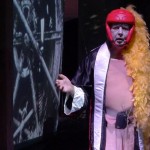
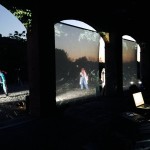
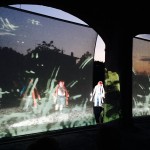
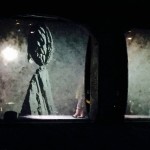
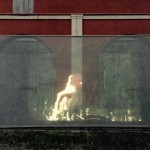
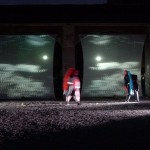

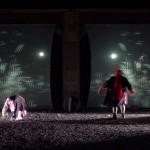
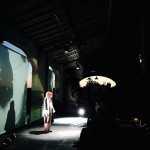
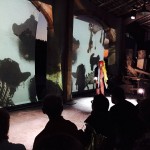
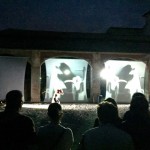
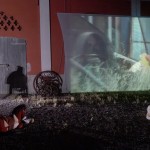
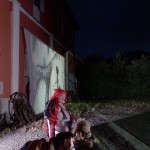
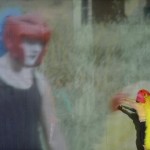
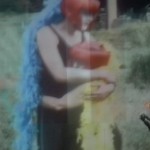
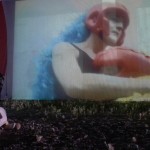
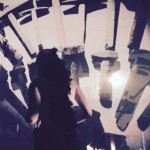
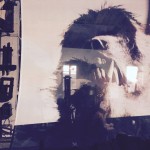
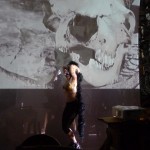
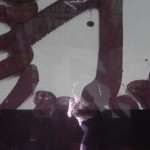
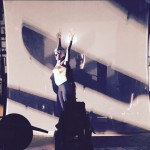
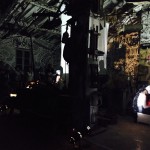
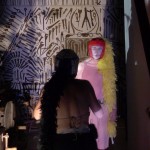
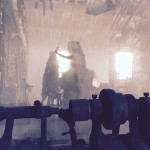
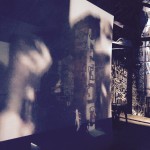
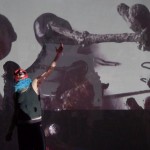
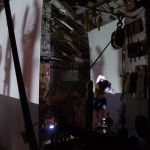
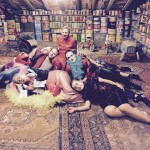
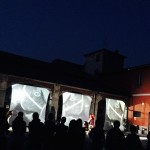
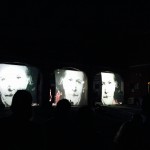
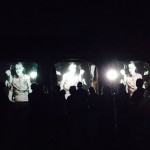
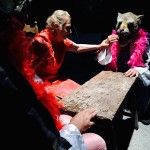
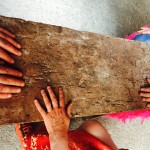
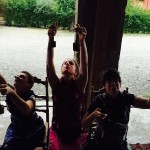
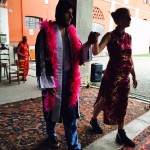
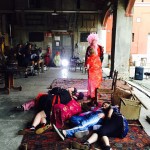
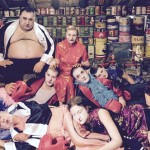
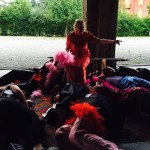
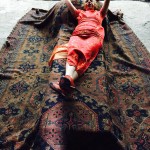
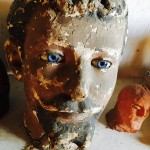
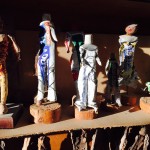
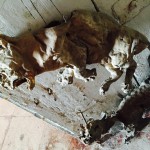
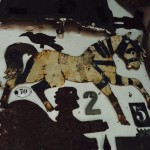
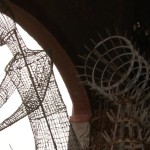
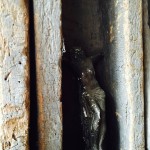
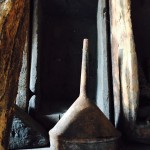









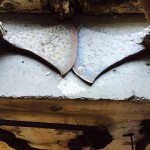
![[cml_media_alt id='5381']Microsoft Word - THE FURIOUS Press Review .doc[/cml_media_alt]](https://lenzfondazione.it/wp-content/uploads/2015/02/IL-FURIOSO-Rassegna-Stampa-1-663x1024.jpg)
![[cml_media_alt id='5373']Rece Chimenti The FURIOUS[/cml_media_alt]](https://lenzfondazione.it/wp-content/uploads/2015/02/Rece-Chimenti-Il-FURIOSO-300x287.jpg)
![[cml_media_alt id='5374']The Furioso-The Escape 1 review. Journal of Parma[/cml_media_alt]](https://lenzfondazione.it/wp-content/uploads/2015/02/Il-Furioso-La-Fuga-1-recensione.-Gazzetta-di-Parma-300x110.jpg)

